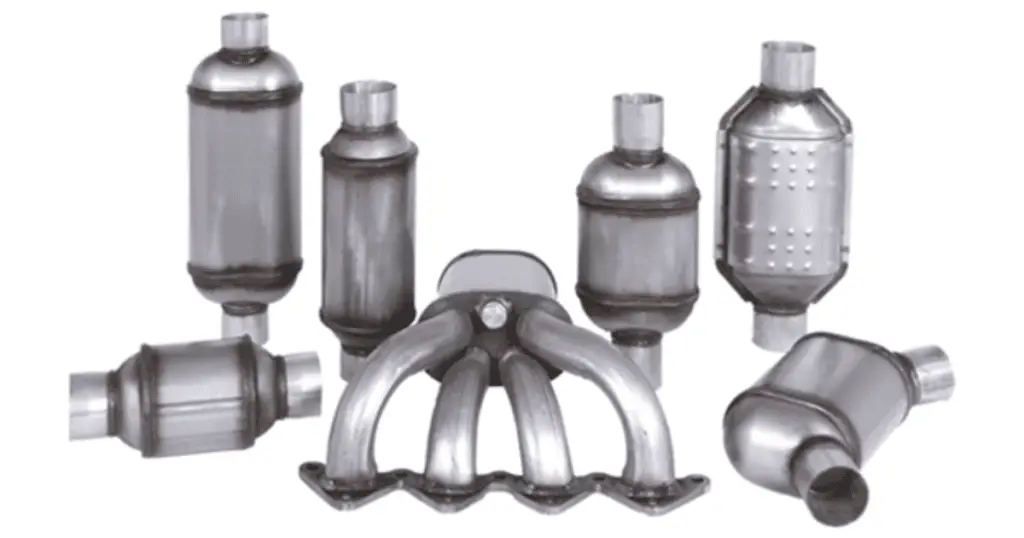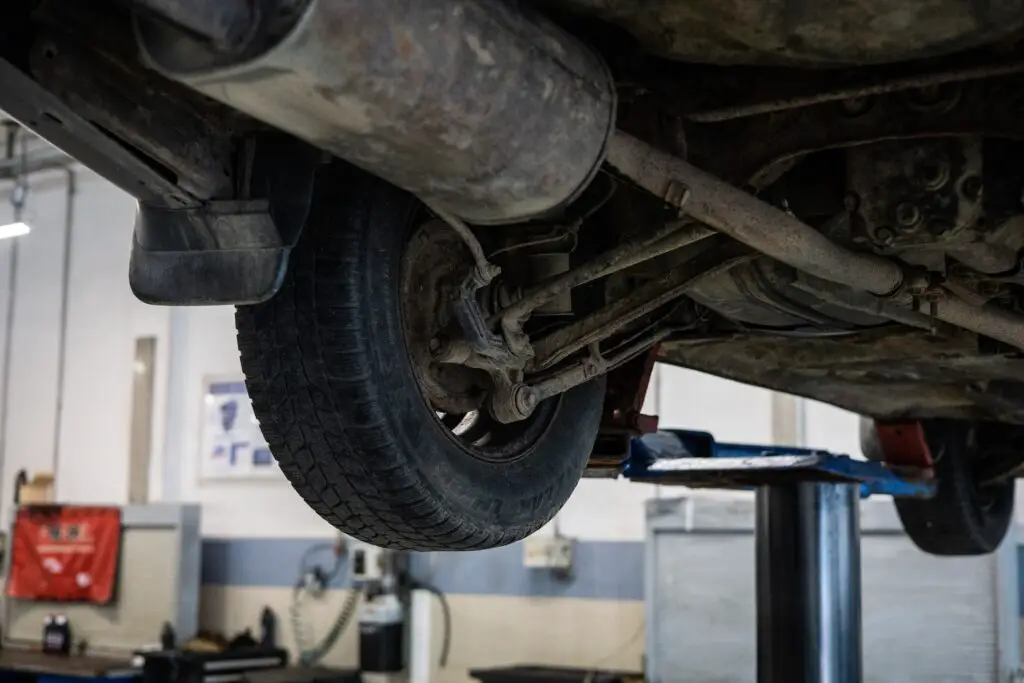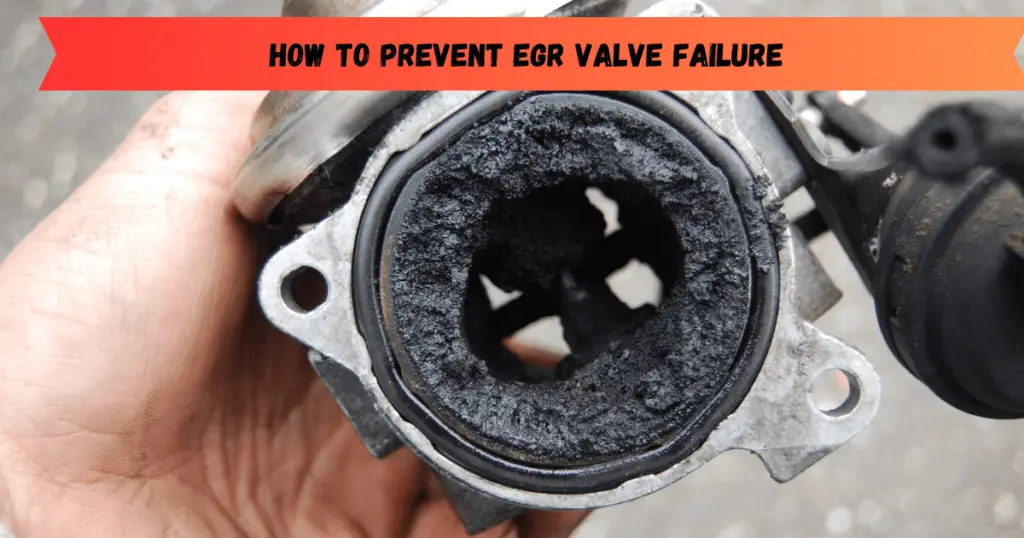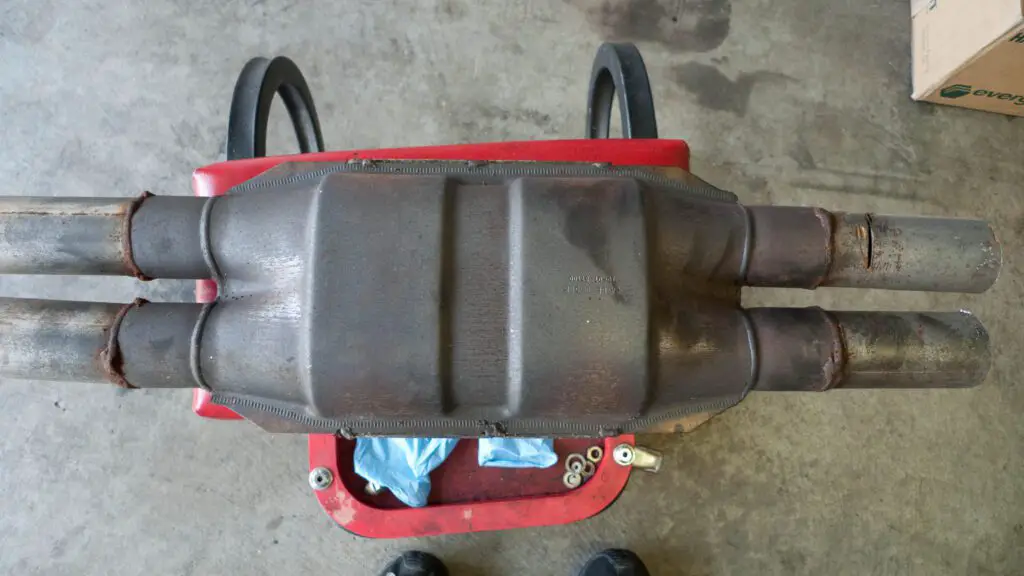No, in most cases a significantly clogged catalytic converter cannot unclog itself without assistance. At best, minor buildup might clear with extended high-RPM driving. However professional cleaning or replacement is typically required for heavy congestion.
Now let’s explore Can a Catalytic Converter Unclog Itself? in more detail…
Your check engine light blinks ominously as the sweet stench of rotten eggs wafts from the tailpipe. Your catalytic converter is clogged with gunk, but will it magically clear itself? Or does time for repairs await?
So before you hit the highway hoping highway speeds blast your converter clean, let’s build up your exhaust system knowledge. Only then can you decide between converter DIY maintenance, repairs, or replacement. The open road awaits!
How Do Catalytic Converters Get Clogged in the First Place?
Can a Catalytic Converter Unclog Itself? Catalytic converters have a tough job, processing toxic exhaust gases through a fragile honeycomb structure. Over time, this contamination gradually blocks the honeycomb airflow channels. Common clogging causes include:
Unburnt fuel – Incomplete combustion from issues like misfiring injectors, bad ignition coils, or lean/rich fuel mixtures allows raw unburnt fuel into the converter. This carbonizes and blocks the honeycomb.
Oil contamination – Oil leaks or blow-by past worn piston rings send oil into the combustion chamber. This burns into carbon deposits in the converter.
Dust and dirt – Airborne debris gets sucked into the engine and then burnt into carbon and soot that collects in the converter.
Short trips – Frequent short trips prevent the converter from reaching full temperature to burn away contaminants. The gunk accumulates over time.
Damaged honeycomb – Internal converter damage from overheating or rattling parts physically blocks the delicate honeycomb passages.
Knowing these clogging culprits reveals how to prevent converter congestion through proper engine maintenance and operating temperatures.
5 Symptoms Your Catalytic Converter Needs Unclogging
Can a Catalytic Converter Unclog Itself? Watch for these warning signs of a restricted catalytic converter:
- Reduced engine power and acceleration
- Increased fuel consumption and lower MPG
- Difficulty starting the engine after stalling
- “Eggshell” exhaust odor indicating sulfur emissions
- Illuminated check engine light, especially emissions-related codes
- Failed state emissions inspections from high sensor readings
- Overheated or visibly damaged external converter
Address these symptoms promptly to revive your fouled converter potentially. The longer you wait, the lower the odds self-cleaning or repair will work.
Can a Clogged Catalytic Converter Unclog Itself?
Can a Catalytic Converter Unclog Itself? In limited cases, you may get lucky with self-cleaning through sustained high-RPM highway driving, but this is unpredictable:

Partial clogs – Maintaining 2500+ RPM for 30+ minutes can potentially loosen minor carbon buildup through extreme heat.
Severely fouled – Heavy contamination requires professional cleaning equipment or replacement. Don’t count on natural self-cleaning.
Melted honeycomb – Internal melt damage from extreme overheating cannot be reversed. Replacement is required.
So while hitting the expressway in low gear may blast away some congestion if you catch it very early, seriously clogged converters are beyond natural self-repair.
DIY Methods to Unclog a Catalytic Converter
You can attempt home remedies to remove mild clogs, but results vary:
Feed engine cleaner in the fuel – Detergents and additives may dissolve deposits over weeks of use. Prevent clogs but don’t clear established blockages.
Remove and soak in solvent – With effort, the converter internals can be flushed with commercial degreasers or crude homemade concoctions. Re-installment poses risks.
Backflush exhaust with pressurized air – Forced high-pressure air blasts debris out the front. Some shops offer this service.
Drive aggressively – Hours of sustained high RPM and engine load might burn away debris on a partially clogged converter—unpredictable results.
These remedies only work for the lightest contamination. Heavy carbon buildup and melted catalytic substrates require professional equipment.
Signs You Need a Professional Catalytic Converter Cleaning Service
Can a Catalytic Converter Unclog Itself? Leave converter cleaning to the professionals if you notice:
- No power improvement after extended Italian tune-up attempts
- Check engine light stays illuminated with emissions-related codes
- Failed local emissions inspections after DIY cleaning tries
- Visible converter damage like overheating or rattling internals
- Lack of time, skill, tools, and workspace for proper DIY removal and cleaning
- Contamination too heavy for home remedies like fuel additives or revving
- Repeat clogging issues indicating unsolved root problems
Trained technicians with specialized tools can clean converters you have no hope of unclogging in your driveway. Be realistic to avoid wasting time on converters too far gone.
Is it Better to Clean or Replace a Fouled Catalytic Converter?
If professionally cleaning an intact but contaminated converter costs $350, is that money better put toward replacement? It depends:
- Converters over 100k miles are often not worth cleaning due to internal wear and imminent failure.
- Heavily repeated clogging indicates issues like oil burning or misfires that require repairs beyond just the converter.
- Cleaning succeeds mainly on lightly fouled intact converters. Heavy carbon buildup and melt damage are difficult for even pros to fully clear.
- Replacement converters feature modern compositions that better resist clogging.
Can a Catalytic Converter Unclog Itself? Weigh all factors carefully. For borderline cases, try cleaning first then replace later if it fails to fully restore performance and emissions compliance.
Replacement Catalytic Converter Cost Comparison
Expect to pay $800-$2500+ for professional converter replacement:


Table comparing OEM and aftermarket catalytic converter pricing
| Converter Type | Parts Cost | Labor Time | Total Cost |
|---|---|---|---|
| OEM Factory | $800-$2000 | 1-5 hours | $1200-$3000 |
| Aftermarket | $400-$1200 | 1-5 hours | $800-$2000 |
Aftermarket cats provide cost savings but may not last as long. The labor time involved depends on exhaust layout accessibility. Give cleaning a try first on salvageable OEM converters.
Can I Pass Emissions Testing With a Clogged Catalytic Converter?
Almost certainly not. Emissions monitors measure pollutant levels before and after the converter. Significant differences or high readings automatically fail a restricted or dead converter. Some temporary waivers may allow you time to complete repairs after a failed test. But eventually, the converter needs to be fixed to pass and renew your registration.
Frequently Asked Questions
Let’s recap some key facts on maintaining and unclogging catalytic converters:
How do you know if your catalytic converter is clogged?
Reduced performance, rotten egg smell, failed emissions tests, illuminated check engine light, power loss, and difficulty starting all indicate a restricted converter.
What are two symptoms of a failed catalytic converter?
Decreased engine power with acceleration issues and the strong stench of sulfur from the tailpipe both point to catalytic failure.
Can I drive with a clogged catalytic converter?
It’s not recommended to drive with a clogged converter outside of very short trips to the mechanic. This risks further internal damage and creates hazardous conditions for you and others on the road.
How can I unclog my catalytic converter without replacing it?
For mild clogs, try adding converter cleaner to the fuel for weeks at a time along with extended highway driving to heat and clear out debris through sustained RPMs. No guarantees, but may help postpone replacement.
Should I just remove the catalytic converter if it’s clogged?
Removal is illegal and will cause vehicle drivability issues plus inspection failures. Replacement maintains the emissions system integrity. Remove only if permitted under specialty exemption rules.
How long will a clogged catalytic converter last?
Once significantly clogged, internal damage spreads rapidly shortening remaining life. Have it cleaned or replaced promptly. Attempting to prolong the clogged converter function greatly heightens the risk of a full failure. Stay ahead of contamination.
Conclusion
While our catalytic converters do their best processing engine exhaust, eventually enough carbon, oil, and dirt debris collects to impede function. Allowing time for self-cleaning clears only the mildest clogs. Be proactive about addressing root causes like misfires to sidestep repeated converter replacements. Known issues won’t fix themselves – give your converter a helpful hand by utilizing professional cleaning services when possible and replacing only when unavoidable. With some care, your converter can keep exhaust flowing smoothly for years of driving!





